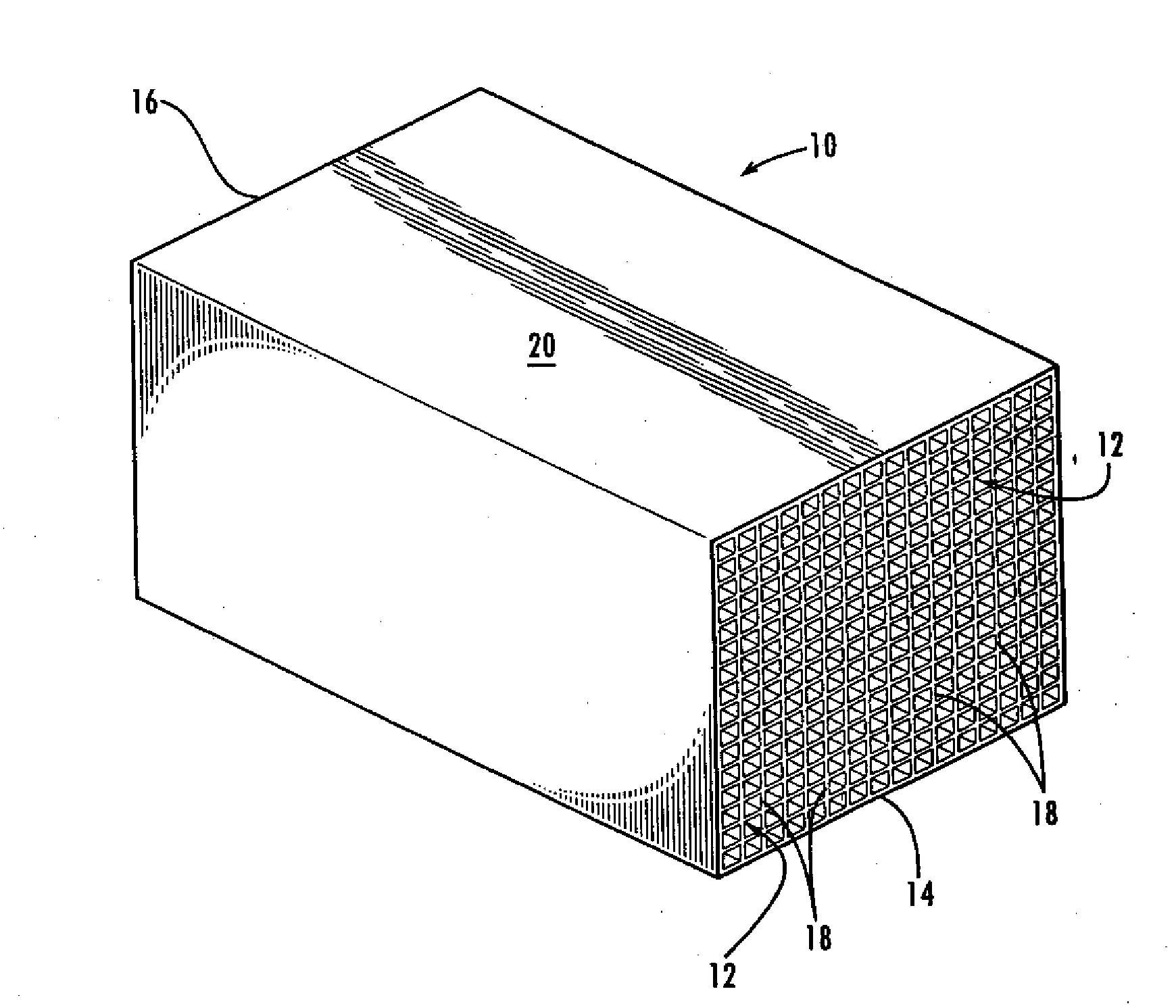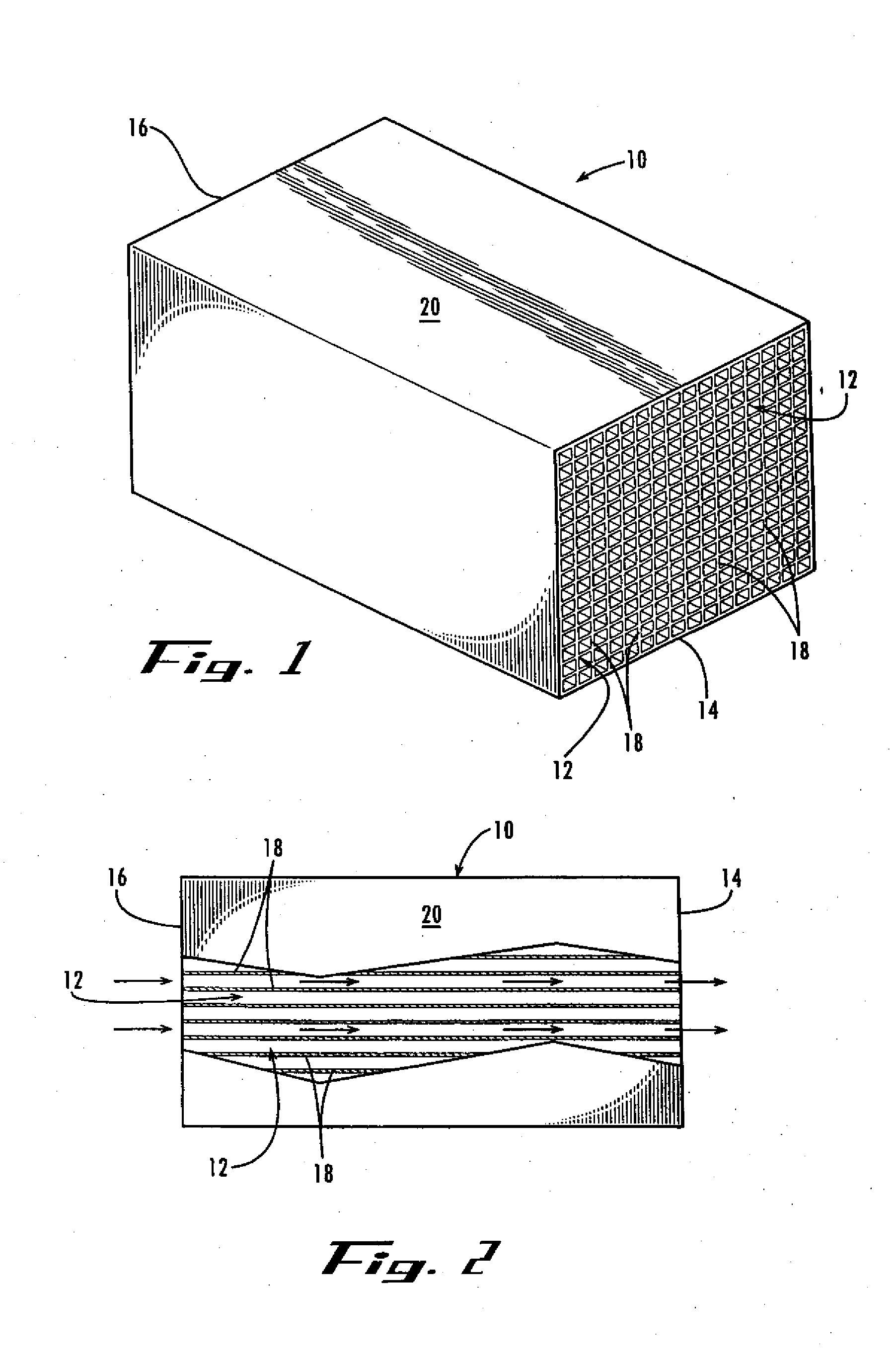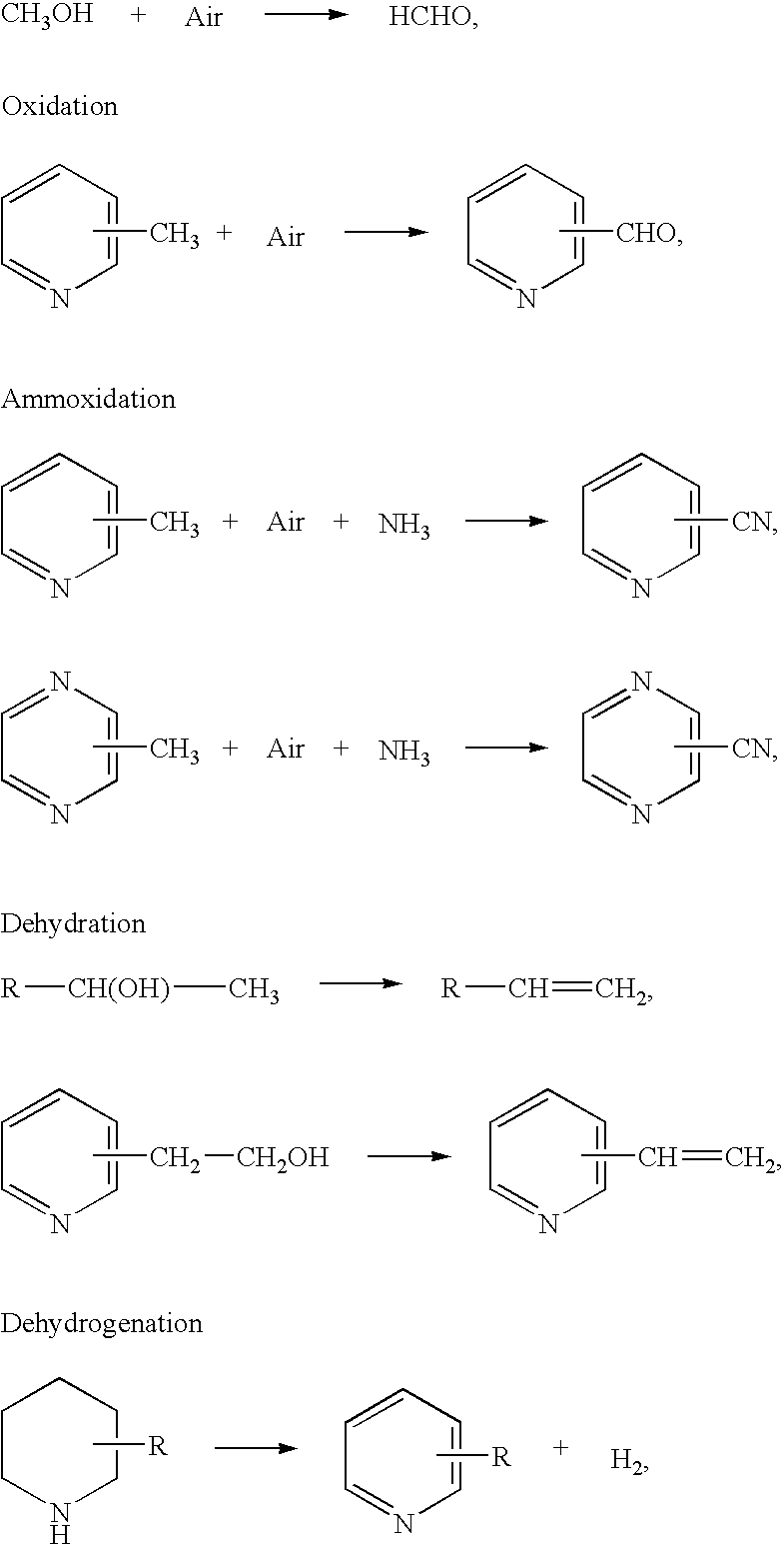Carbon black monolith, carbon black monolith catalyst, methods for making same, and uses thereof
a carbon black monolith and catalyst technology, applied in the field of carbon black monoliths, can solve the problems affecting the formation of monoliths from alternative sources of carbon with sufficient strength, and affecting the formation of monoliths. withstand handling and use, and achieves superior activity and selectivity, the effect of reducing the energy of the transition
- Summary
- Abstract
- Description
- Claims
- Application Information
AI Technical Summary
Benefits of technology
Problems solved by technology
Method used
Image
Examples
example 1
[0090]Four formulations (A-D) of dry ingredients as shown in Table 1 are dry blended for about 4 minutes. An appropriate amount of water to make an extrudable mixture is added, and the ingredients are wet mixed in a high energy mixer for about 5 minutes until a mixture with acceptable extrusion properties is obtained.
TABLE 1Formulation in parts by weightIngredientABCDCarbon black150503030ball clay242365850calcined kaolin3871210nepheline syenite4—7—10sodium silicate5—4.5—2.8(solids from aqueoussolution)methyl cellulose6442.52.5water831026675bentonite31——surfactant733——1Monarch 700 available from Cabot Corp.2Available from Kentucky & Tennessee Clay Co. of Mayfield, Kentucky under the designation OLD MINE #4 Ball Clay.3Available from Georgia Kaolin of Union, New Jersey under the designation GLOMAX LL.4Available from Unimin Specialty Materials of Elco, Illinois under the trademark MINEX ®.5Available from PQ Corporation, Industrial Chemicals Division of Valley Forge, Pennsylvania in solu...
example 2
[0093]Approximately 2 L of de-ionized water is added to a 3 L heated glass reactor, and agitated by a variable speed motor attached to a plastic impeller. The temperature is ambient, and recorded via a thermocouple connected to a recording device. A quantity of sodium carbonate is added to the water in the stirring reactor so as to elevate the pH to about 10.5.
[0094]A finished self-supporting carbon black monolith made in accordance with Example 1 is placed in the reactor so as to have the sodium carbonate aqueous solution pass evenly through the cells of the monolith as the solution is agitated.
[0095]In another glass container, a solution of palladium chloride is prepared so as to have a palladium metal loading by weight of the carbon monolith of 0.1%. The pH of this solution is adjusted to a pH of 4.0 using sodium bicarbonate. This solution is metered into the reactor.
[0096]After the metering of the palladium solution, the reactor is heated via an electronic temperature controlled...
example 3
[0099]In the same manner of Example 2, a finished self-supporting carbon black monolith is used to prepare a catalyst with a palladium metal loading of 5% by weight of the carbon black monolith catalyst.
[0100]Ingredients are increased proportionally to the amount of palladium metal used in this Example 3, as compared to Example 2.
PUM
| Property | Measurement | Unit |
|---|---|---|
| particle size | aaaaa | aaaaa |
| pH | aaaaa | aaaaa |
| pressure | aaaaa | aaaaa |
Abstract
Description
Claims
Application Information
 Login to View More
Login to View More - R&D
- Intellectual Property
- Life Sciences
- Materials
- Tech Scout
- Unparalleled Data Quality
- Higher Quality Content
- 60% Fewer Hallucinations
Browse by: Latest US Patents, China's latest patents, Technical Efficacy Thesaurus, Application Domain, Technology Topic, Popular Technical Reports.
© 2025 PatSnap. All rights reserved.Legal|Privacy policy|Modern Slavery Act Transparency Statement|Sitemap|About US| Contact US: help@patsnap.com



